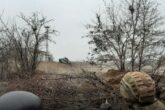May 31, 2022
Time to start operationalizing wearable technology in the DoD
The 2022 National Defense Authorization Act directs the Department of Defense to develop a digital health strategy to incorporate new and emerging technologies — including wearable devices that could utilize big data and predictive analytics to bring a value-added capability to personnel across the DoD. While initial efforts will focus on improving the delivery of clinical care, health services, and the patient experience, wearable devices should quickly transition to other operational settings as well.
Using data from humanity’s eight billion people creates the opportunity to enable new medical technologies, healthier living conditions, and optimally engineered work environments. Even a slice of that greater population, such as the two million US servicemembers, would provide valuable insights and be a game changer in operationalizing wearable technology. Clearly, expanding the use of wearable technology in the DoD could have positive implications for both military capability and general health research.
Given Congress’ intent on this technology, department leaders should seek to embrace its potential and empower each service.
Wearables first became a serious defense topic in 2018 when it was discovered that a running app was tracking service member data and location on military installations, setting off a firestorm of concern that led to new regulations. Those regulations have evolved to the point that allows wearables on military locations after meeting certain criteria. Now, if approved and in compliance, service members routinely include wearable technology as part of their daily attire in classified areas at military installations around the globe.
While other challenges will arise, such as who owns the data and how it will be used, the operational impacts for the joint force make this maturing technology worth incorporating into the DoD. Given Congress’ intent on this technology, department leaders should seek to embrace its potential and empower each service.
Read the full article from Breaking Defense.
More from CNAS
-
Defense / Transatlantic Security
When Defense Becomes Destruction: Austria-Hungary’s Mistake and Ukraine’s RiskThis article was originally posted on War on the Rocks. The southeastern Polish city of Przemyśl, with its elegant 19th century Habsburg-era train station, remains one of the ...
By Franz-Stefan Gady
-
Defense / Transatlantic Security
Ukraine’s Catch-22 MomentThis article was originally published in the Financial Times. In Joseph Heller’s wartime classic, Catch-22, the protagonist Yossarian seeks out the US army surgeon Doc Daneeka...
By Franz-Stefan Gady
-
CNAS Insights | Budgetary Own Goals Undermine “Speed and Volume”
On November 7, Secretary of Defense Pete Hegseth laid out a plan to overhaul the Department of Defense’s (DOD’s) acquisition system. Placing an emphasis on delivering new capa...
By Philip Sheers, Carlton Haelig & Stacie Pettyjohn
-
Drones: Who Is Making the New Weapons of War?
From Ukraine and Russia to Gaza and Sudan, drones have become a key weapon of war. Which companies are making them, and profiting from this rapidly expanding but controversial...
By Stacie Pettyjohn




